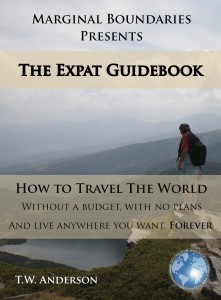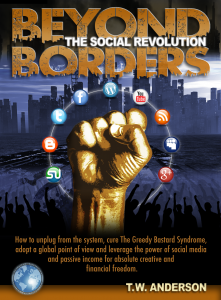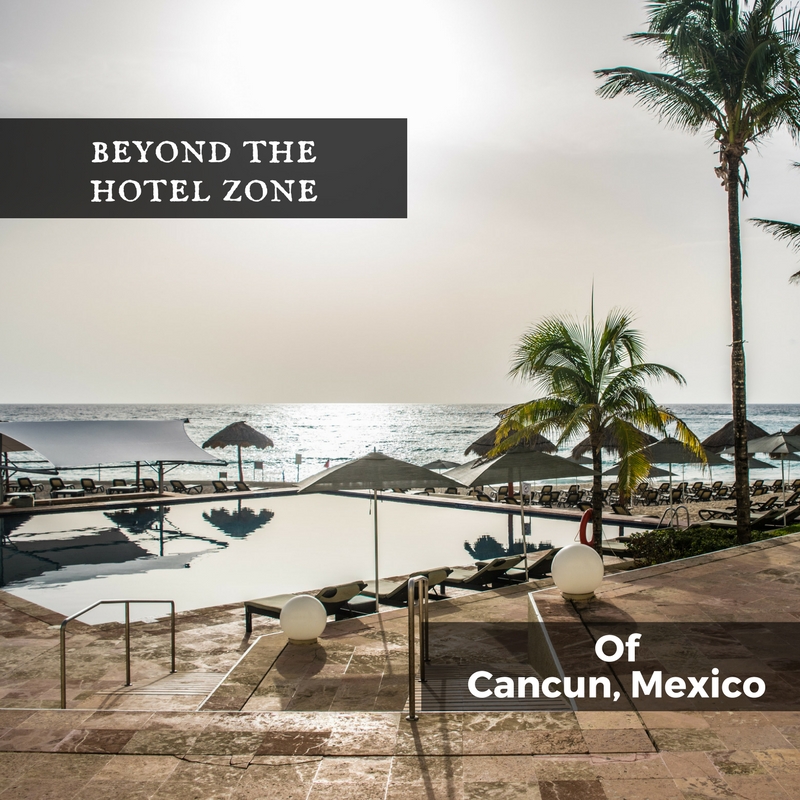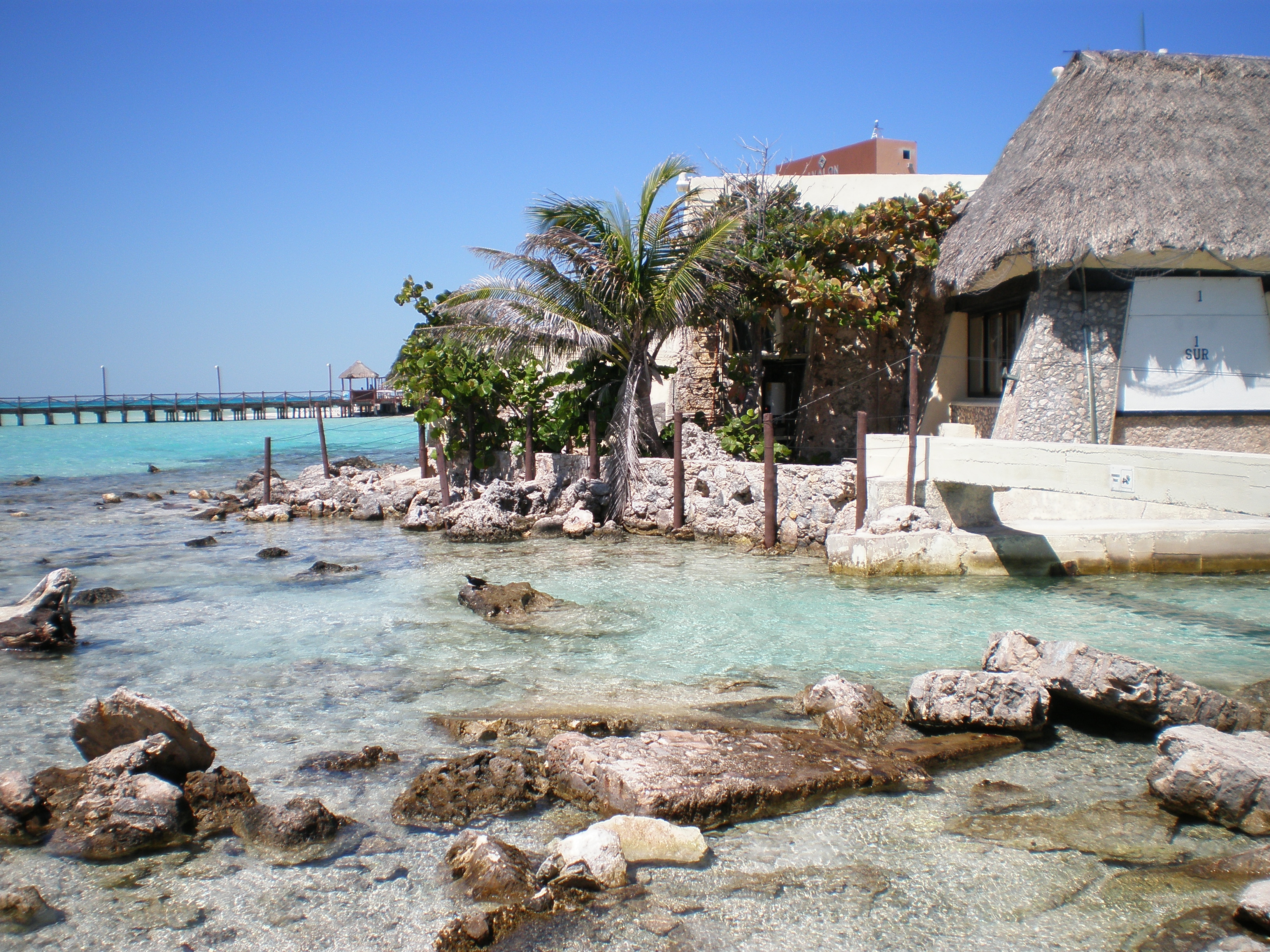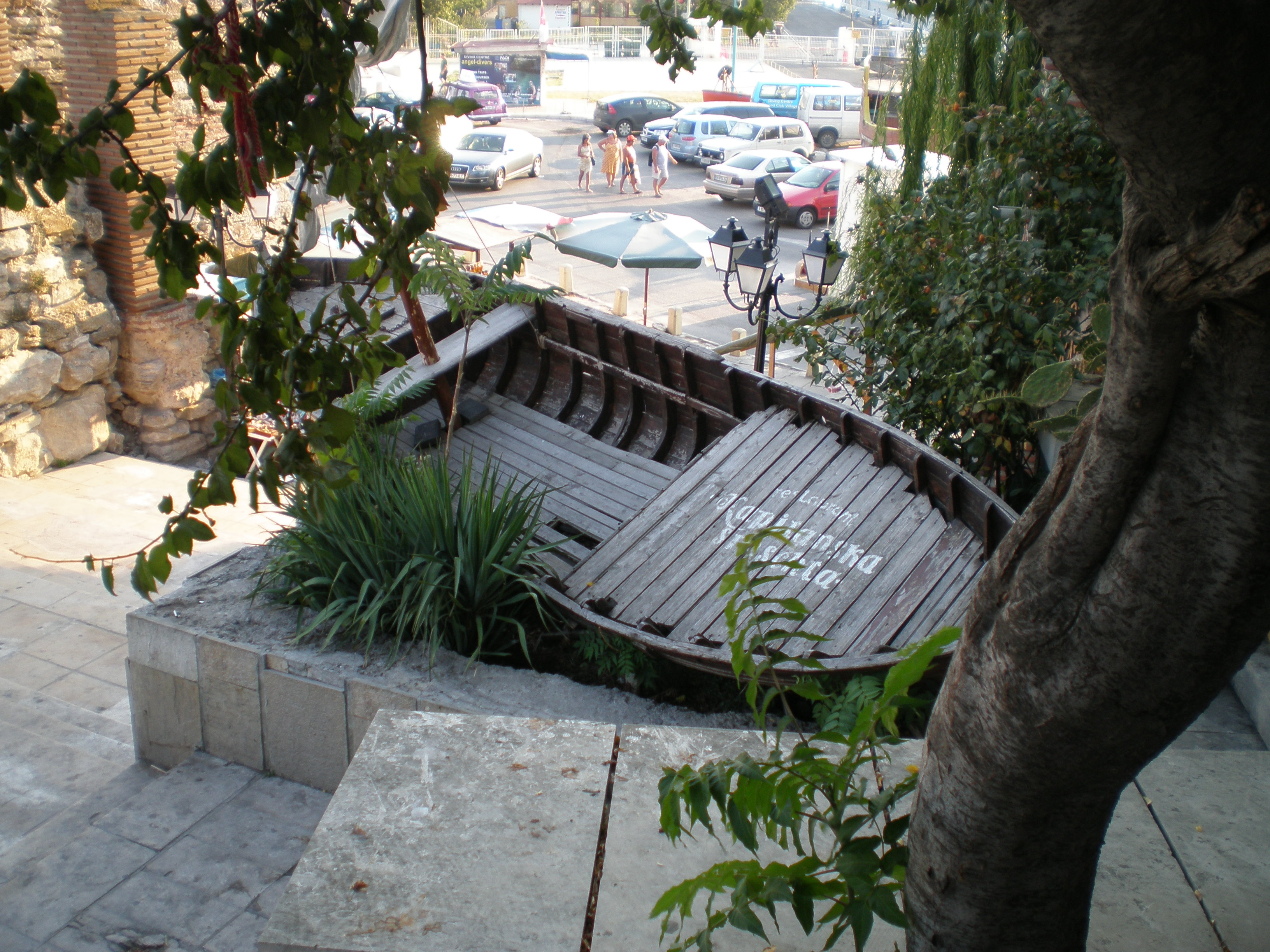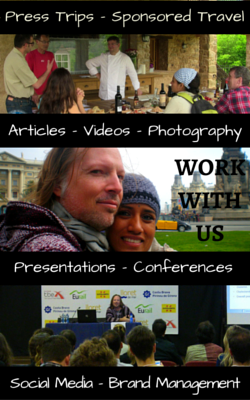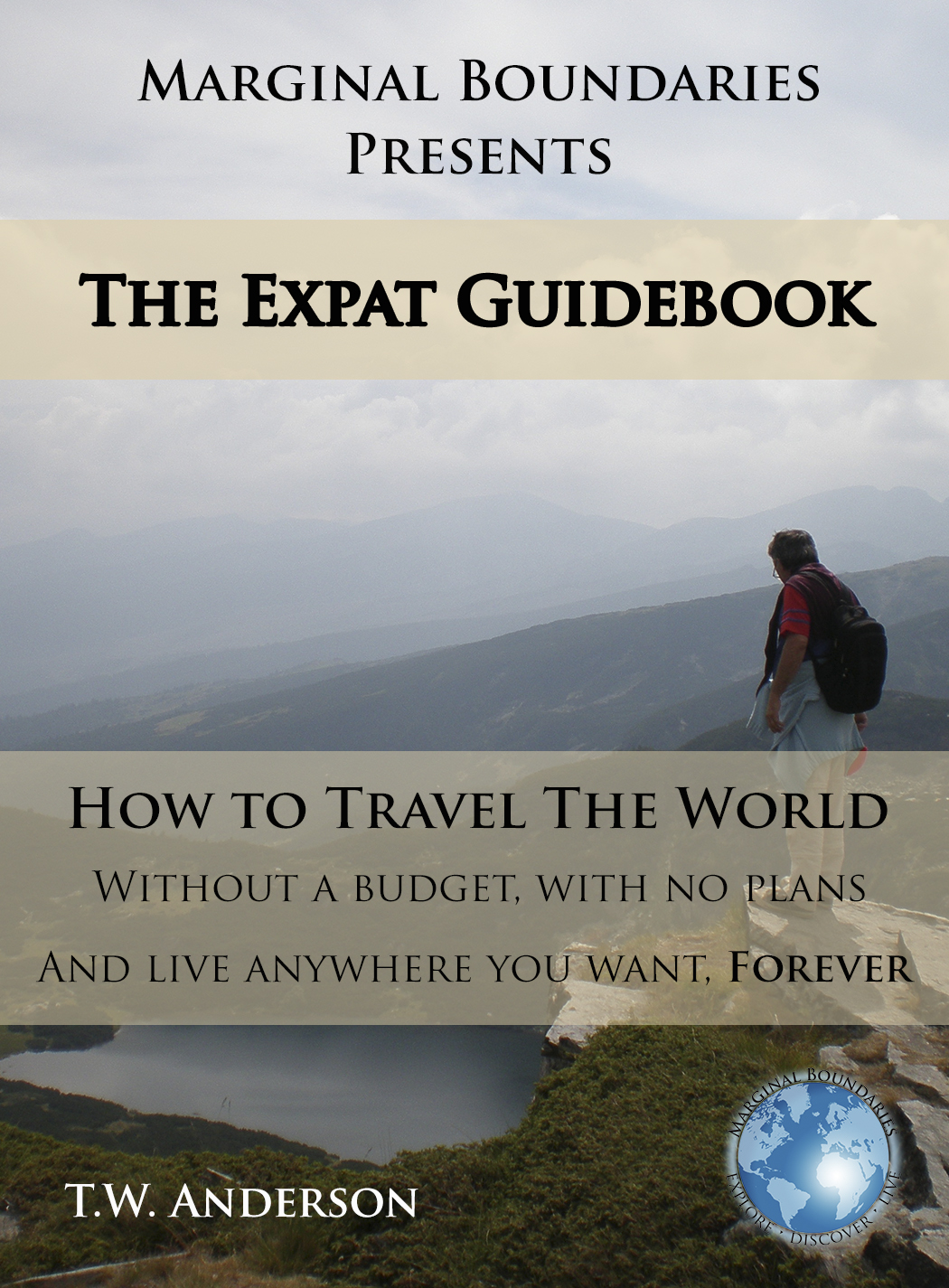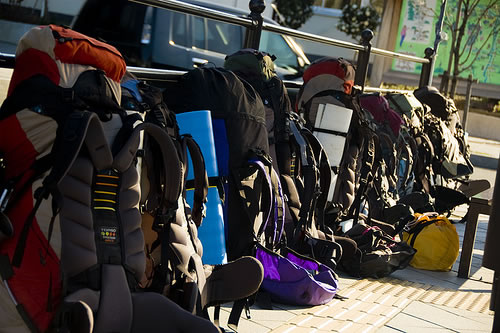
Backpacking Basics for Expats
Posted by T.W. Anderson | Live Like a Local, Quality of Life, Traveling Tips | 6 CommentsBefore I get started, let me preface this article with the following statement: there is a difference between long-distance trekking and backpacking for expats. This is not a camping/trekking article. While you need certain things for long-term trekking and camping (bedroll, sleeping bag, mosquito repellent, water bottle for example), when it comes to general backpacking as well as moving around place to place and actually living out of your backpack, it all comes down to one simple rule: less is more.
If you haven’t read 30 Ways in 30 Days, there’s a section in the eBook on Traveling Light (which is also an associated blog post for Day Four) where I cover some of the basics behind my personal recommendations for “backpacking essentials”, as well as where I drew my own inspiration. I’m a big fan of keeping non-essentials to a minimum and traveling as light as possible, and I’ve refined it down over the years to the point where I can reliably live out of a 35 liter pack…and yet still travel with a surprising amount of “things”.
Backpacking advice listed by places such as REI is meant for absolute newbies who have no idea what they are doing; this is high-quality copywriting at its finest. It’s written with a specific “incite to buy” motive behind it. The advice offered is absolutely not based in reality, and no full time traveler that I know would ever recommend such an absolutely ridiculous level of assortments + size of pack. They have one goal in mind, and that’s to get you to buy all the little extras that go along with the backpack, thus racking up a profit. Real backpackers will tell you the exact opposite: less is more.
That’s because those of us who have been on the road professionally know that there are numerous downsides to traveling with a heavy pack, not the least of which is the sheer discomfort of lugging around tens of kilos’ worth of useless gear and accessories. Instead, you should refine your list down to the bare essentials and then work your way up from there.
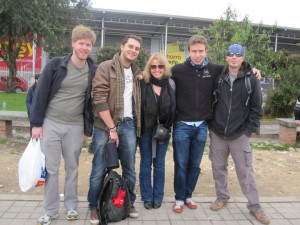 The picture here on the right is me with some friends in Bogota, Colombia. I’ve got my pack strapped on and you can’t even see it. That’s how awesome this size of bag is. I’ve got all my living essentials in there, but it’s virtually non-existent in terms of weight and size. I can hike all day and never feel it.
The picture here on the right is me with some friends in Bogota, Colombia. I’ve got my pack strapped on and you can’t even see it. That’s how awesome this size of bag is. I’ve got all my living essentials in there, but it’s virtually non-existent in terms of weight and size. I can hike all day and never feel it.
I’ve been on the road for going on five years now. I have a 35 liter pack that I live out of, plus a normal backpack for day trips and my laptop bag. When I arrive in a destination I am unencumbered, I can move quickly when needed, I can keep my pack with me when I get on a bus or into a cab without having to worry about taking up enough space for a human being, and most important, it’s not something that bogs me down and has me moving like an overweight yeti trying to lumber my way through a crowd while pouring sweat and lugging 50+ kilos worth of gear.
My pack includes:
- Three t-shirts
- Two pairs shorts
- Two pairs lightweight cargo pants
- Six pairs of socks
- Four pairs of boxers
- Extendable pullup bar for my workouts
- One pair resistance bands for my workouts
- Two-part handheld blender + container
- One sweater
- Nike workout/jogging shoes
- Workout shorts/shirt
And that’s it. I don’t travel from place to place with a towel (I used to, but eliminated it from my list), because it’s extra weight and I can pick one up in any city in the world for a few dollars. I don’t need lots of clothing because I like to blend in when I’m on the ground living as an expat, so I pick up local clothing when I arrive, if I need any (I had to buy an extra sweater and scarf while I was in Bogota, for example, which didn’t come back to Cancun with me). I rarely travel with creams, lotions, soap, shampoos and conditioners since I can pick those up locally, I don’t travel with shaving cream or gel since I can pick those up locally, and I’m a big fan of two dollar flip flops that I can pick up in any city in the world, so I don’t have to worry about space for shoes since I always travel with my multi-purpose hiking shoes (currently a pair of North Face that work in the city as well as countryside) and then pick up flip-flops when I get on the ground for daily walking/markets/shopping/daily life.
I can easily jog with my 35 liter pack, even when it’s fully packed. The only somewhat sluggish piece of equipment I have is my laptop bag, but that only bothers me when I’m moving from one apartment to the next, so usually only to/from the airports. I do long-term immersion travel as an expat, so I’m usually in a place for several months at a minimum, which means I have a local apartment where I store all of my things and set up a base of operations, and then I can just use my day pack for any outings I make while I’m on the ground exploring the local area.
There’s a variety of reasons I like to keep things to a minimum. First, it’s light, and I can move quickly when needed, such as to catch a bus or taxi. Secondly, I don’t have to stow my gear in the trunk of a cab, which is one of the crucial mistakes many people make when arriving in a new destination. You get there, stow your gear, arrive at the destination and find out that the cabbie wants ten times the fare he quoted when you were at the airport/bus station…and he’s got all your gear in his trunk. Instead, my gear goes into the back seat with me…or on my lap when I’m on a bus, or strapped to my back if I’m standing on a subway. Since it’s a mere 35 liters, it’s not taking up a huge amount of space like an 80 liter pack that is easily as large as another human being strapped onto your back and makes it impossible to maneuver on a crowded bus/tram/metro/train.
If I got rid of the laptop and went with a tablet I could ditch the laptop bag as well, but I still write full time and I haven’t found myself comfortable enough to only work with a tablet. However, I see the day coming when I won’t need to use my laptop anymore, and around the time this one dies I’ll probably be to the point where I won’t even need the laptop anymore and can do everything out of my 35 liter pack.
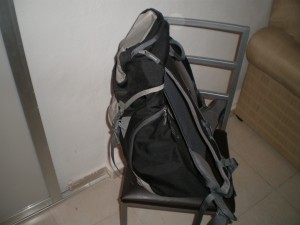 I use the Groden 35 Liter from Deuter; I’ve got the model from a few years back, which is grey and black. This is one tough pack, plus it’s super comfortable, I love the back mesh (I’m a sweater), the straps are comfy, it’s got plenty of pockets, its own rain cover and for the money it was a solid investment, in my opinion. I’ve also never needed more than that, although the few times I travel with a towel (a rarity; usually only happens on weekend trips so I have one for hostel-outings), I’ve had the thing maxed out in terms of space, but still never wanted for anything extra as all my essentials were there.
I use the Groden 35 Liter from Deuter; I’ve got the model from a few years back, which is grey and black. This is one tough pack, plus it’s super comfortable, I love the back mesh (I’m a sweater), the straps are comfy, it’s got plenty of pockets, its own rain cover and for the money it was a solid investment, in my opinion. I’ve also never needed more than that, although the few times I travel with a towel (a rarity; usually only happens on weekend trips so I have one for hostel-outings), I’ve had the thing maxed out in terms of space, but still never wanted for anything extra as all my essentials were there.
Some of my favorite reasons for traveling with a 35 liter versus something larger:
- You will need to walk with your pack on freely, sometimes across town or from hotel to hotel and it’s often very hot. When you do take transport, you can swing a small bag over your front and jump in a taxi/rickshaw with ease, quickly and without having to separate yourself from it. In addition, leaving your pack in lockers can be a problem if it is huge. Not the case with smaller bags
- When you do get on little buses that stop at the side of the road – the most common way of getting around in many countries – they are normally crowded and have no luggage holds so while you get on and off you whack everyone in the face with your pack as you go past and sometimes need to buy a seat for your bag. All of these problems are eliminated with a smaller bag.
- Your bag is your life. The smaller it is the less it sticks outs and the less vulnerable you are.
- The smaller the bag, the more mobile you are. I’m a big fan of mobility.
These are just a handful of reasons why less is more.
At the end of the day it’s entirely up to you as to what size of a backpack you feel comfortable with traveling, but the first piece of advice I can give anyone is to never trust the big-name companies as to what types of packs they recommend. The aforementioned blog post and associated links are a good place to start (there’s a whole section in the 30 Ways in 30 Days eBook on traveling light as well), and you can always look to other full-timers and immersion travel experts for targeted advice from people who actually live out of their packs. You’ll quickly find that there are very few professional travelers who recommend anything larger than a 40 liter pack, and almost no one who recommends a backpack over 60 liters unless you are camping.
Don’t forget to sign up for our free newsletter for several-times-a-week, your-eyes-only travel and entrepreneur tips, plus receive a complimentary copy of our 85-page starter book on location independence and living abroad, 30 Ways in 30 Days.

